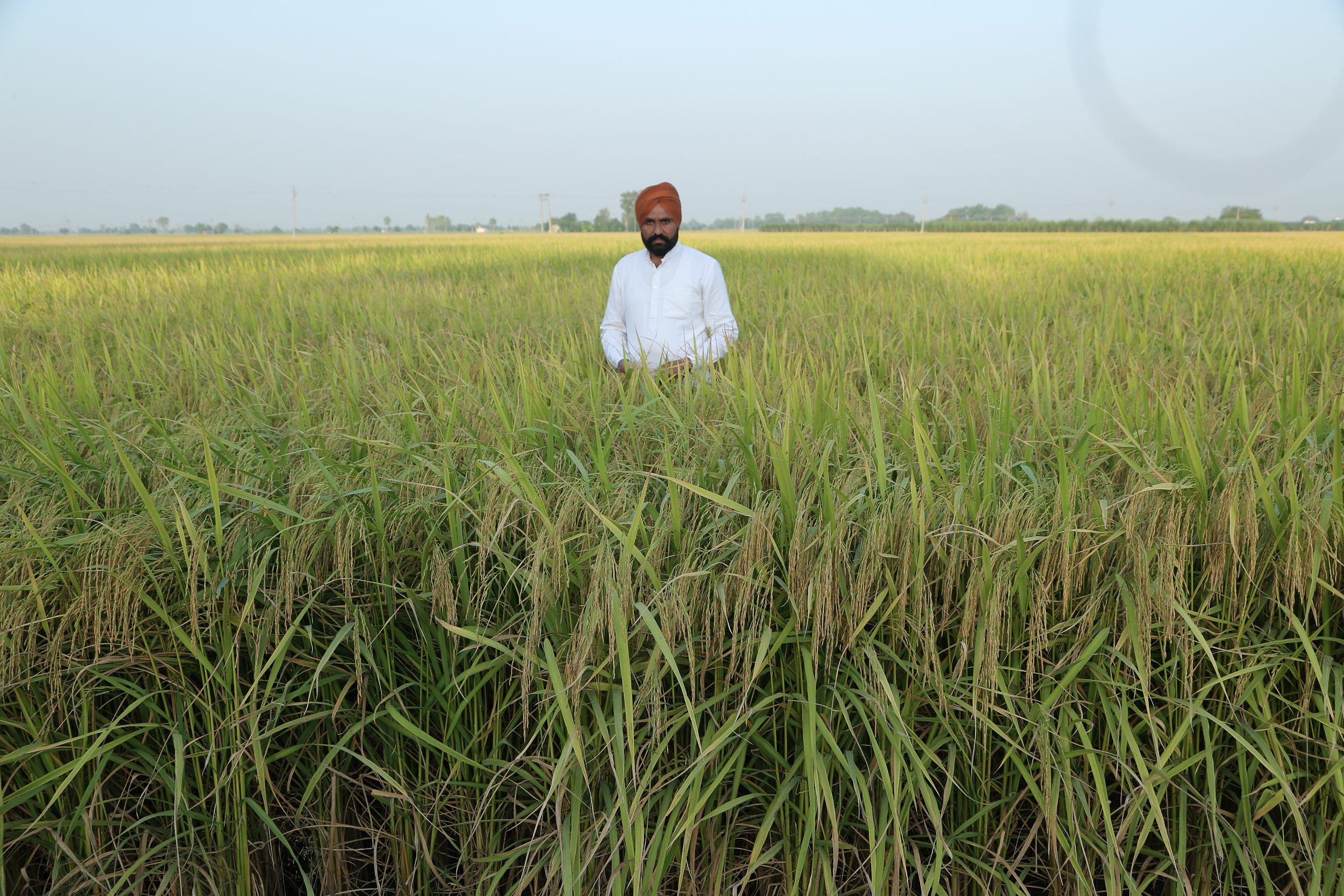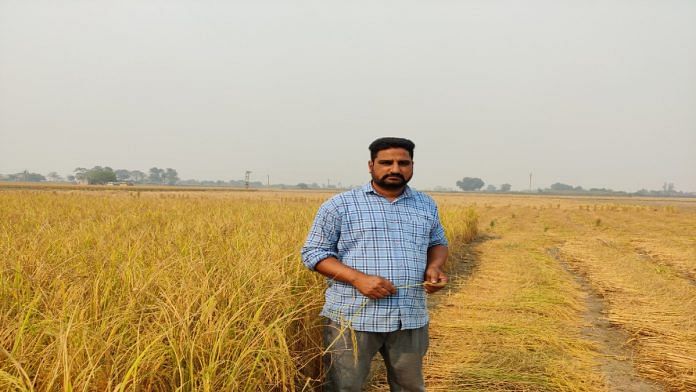Sangrur/Patiala: They are disease-free, use half the water, cost less to grow, give higher yield and fetch higher prices. So, it’s no wonder that three new paddy varieties being grown in Punjab have been dubbed as “krantikari“, or revolutionary, by Harpreet Kaleka, who said that these new varieties will “rule the markets for the next 20 years”.
Kaleka, a farmer in Kamalpur village of Punjab’s Sangrur district, is talking about Pusa Basmati 1847, Pusa Basmati 1885 and Pusa Basmati 1886.
This harvesting season, Harpreet, who had planted all three varieties in June, is a happy man.
The varieties were developed by the Indian Agricultural Research Institute (IARI), an institute under the Indian Council of Agricultural Research (ICAR).
The 1847, 1885 and 1886 are improved versions of the Pusa Basmatis 1509, 1121 and 6, respectively, which accounted for 90 per cent of the Basmati rice exports from India. The need for developing these varieties arose in order to curb bacterial blight and blast diseases which affect the yield and grain significantly. Traditionally, these diseases were treated through chemicals like streptocycline and tricyclazole.
But, according to Harpreet, “Now the importing nations, especially European countries, have started rejecting rice with chemicals in them.”
Also Read: ‘No other option’ — as its fields turn black & skies smoky, why Punjab won’t stop burning stubble
How it began
Dr A.K. Singh, director of IARI, said that he had spoken to the farmers during the Kisan Sampark Yatra held in September. Singh told ThePrint, “We had given 1 kg seeds per acre to 10,000 farmers in different parts of the country (earlier this year)… My advice to these farmers was not to sell these seeds in the market and, instead, give it to other farmers in their blocks and districts to cover the maximum area of basmati cultivation.”
On 15 October, after reviewing the three varieties in the paddy field of IARI in Pusa, Delhi, the Union ministry of agriculture said, “There will be no need to spray pesticides in these varieties, which will reduce the cost as well as produce Basmati rice free from chemical residues, which will fetch good prices in the international market and directly benefit farmers’ income.”
When ThePrint visited Harpreet’s field Thursday, the 1886 variety was still being harvested, while other varieties (1847 and 1885) were ready to be sold.
“Even the cost of cultivating these varieties is less than what it used to be earlier, especially due to less water usage and no use of pesticides,” he said, adding that this was especially true for Pusa Basmati 1847.
For the two crop varieties — 1847 and 1885— the price in the local mandi is Rs 4,050 per quintal and Rs 4,200 per quintal, respectively. The older varieties, on the other hand, were being sold at lower prices. While Basmati 1509 was being sold at Rs 2,500-3,600 per quintal, the Basmati 1121 variety fetched Rs 3,800-4,000 per quintal.
The Minimum Support Price set by the central government for rice is Rs 2,040 per quintal for the 2022-23 crop year.
As for the produce this year, Harpreet said, “I had called some people at the local mandi and they said that this variety (Basmati 1886) will fetch Rs 4,500 per quintal.”
Harpreet says apart from this, the yield has also significantly increased. He said for the 1847 variety, this year, the yield has been 31 quintal while for the 1885 variety, it has been 22 quintal. This compared to the 1121 variety that he used earlier, the yield for which was 17-18 quintals.
Harpreet was able to harvest Pusa Basmati 1847 within 94 days of being planted and Pusa Basmati (1885) in 145 days. The only drawback in Pusa Basmati 1886 is that it takes longer (155 days) than the other two but that is compensated for with the good quality of rice, he said.
Harpreet is now distributing the seeds of these varieties to other farmers in his village.
Gurmail Singh, another farmer from the Gehlan village in Sangrur district, who has only cultivated the Pusa Basmati 1847, echoed Harpreet’s sentiment in calling it the variety “krantikari”.

Satisfied with the longer grain that reflects better quality of the product, Gurmail also agrees that the cultivation cost significantly reduced due to no use of pesticides.
“Apart from diseases, paddy yield is also negatively affected when the crop ‘lodges’. But this variety (Pusa Basmati 1847) is neither affected by disease nor suffers lodging,” says Gurmail.
Lodging refers to the bending of crops due to rain, storm or diseases or other reasons, resulting in weakening of the plant stem to a point where it cannot support the crop, resulting in wastage of the yield.
For Gurmail, Pusa Basmati 1847 took nearly 115 days to be harvested from the time the crop was planted.
Also Read: Why Punjab farmers who bet big on moong this summer reaped a harvest of discontent
High demand for the three varieties in Patiala
Bhagwan Das, president of the Young Farmers Association (YFA), a centre for agricultural research that also spreads awareness about new seeds and technologies, said that Patiala farmers are particularly impressed with Pusa Basmati 1847.
“The most important thing is that these new varieties have not seen any disease and the yield has also been better compared to all previous varieties,” he said.
Das also said that the 1885 variety, an improved version of Pusa Basmati 1121, does not face the problem of lodging and is also slightly better than 1121. “As regards to the yield, 1886 is the most outstanding. It has the maximum yield, particularly due to the long duration of the crop (longest time to be cultivated). Secondly, the quality of rice out of 1886 is also very superior,” Das added.
The three new varieties are seeing a high demand among the farmers in Patiala. “There is huge demand for these varieties amongst the farmers who have seen the demonstration (at YFA). They already want to book these seeds,” Das said.
(Edited by Anumeha Saxena)
Also Read: What’s fortified rice, why is Modi govt pushing it & why some experts aren’t excited



